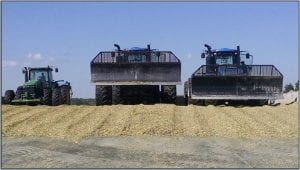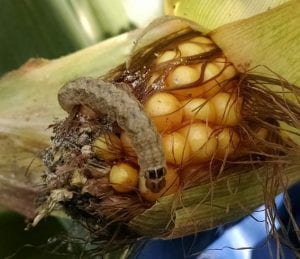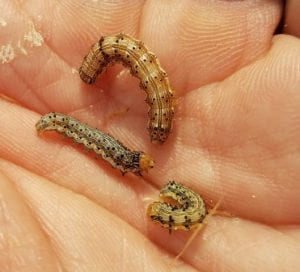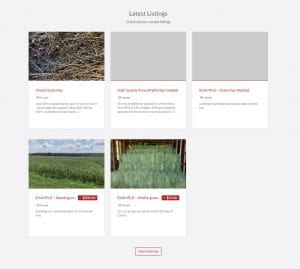Last Chance to Enter the NY Corn and Soybean Yield Contests
 The deadline for the contests is this Sunday, AUGUST 30! Here is a link to the entry form and contest rules on the NY Corn and Soybean Growers Association webpage, https://nycornsoy.org/yield-contests/. Entry forms must be postmarked by the 30th or scanned and emailed to Mike Stanyard (mjs88@cornell.edu). I have not received as many entries as usual so this is a great year to enter!
The deadline for the contests is this Sunday, AUGUST 30! Here is a link to the entry form and contest rules on the NY Corn and Soybean Growers Association webpage, https://nycornsoy.org/yield-contests/. Entry forms must be postmarked by the 30th or scanned and emailed to Mike Stanyard (mjs88@cornell.edu). I have not received as many entries as usual so this is a great year to enter!
Corn Silage Harvest is Right Around the Corner

Photo: M. Stanyard / CCE NWNY Team
Many are predicting that corn silage harvest will be early this year. Here are two new Cornell resources that can help you make the right decisions to put up the highest quality forage.
Corn Silage Harvest Considerations Podcast Series.
Presented by Cornell CALS PRO-DAIRY and Cornell Cooperative Extension.
EPISODE 1 – Corn Silage 2020 Season Recap Listen Now
Ron Kuck, Dairy Educator, CCE of Cayuga County and Joe Lawrence, Forage Management Specialist, Cornell CALS PRO-DAIRY kick off this podcast series by discussing the 2020 growing season. They discuss the impact weather has had on the growing season and what to consider when assessing fields, staging harvest, whole plant DM in decision making, storage planning and what to do if you’re short of space.
Early Corn Silage Harvest 2020
Are you ready for an early harvest? Last Wednesday (8/19/20) Dave Balbian, Cornell dairy specialist in central NY, conducted a webinar about how early corn silage will be ready for harvest this year and how dairy producers can manage that crop to get the most value out of it. You can view the entire webinar by clicking on the following link: https://cnydfc.cce.cornell.edu/submission.php?id=1133&crumb=grains|3
What is this Worm in My Ear?
It’s that time when we are out checking corn ears to see what development stage the kernels are at and how many per row and long to estimate crop yield. Sometimes we get a surprise as we rip open the husk and find a big fat worm making itself at home and eating our corn! There can be a couple of culprits but here are the most likely.
* notes key characteristic for identification.

Photo: M. Stanyard / CCE NWNY Team
Western Bean Cutworm
- – Usually just in ear tip
- – Black bands behind head*
- – Multiple per ear

Photo: M. Stanyard / CCE NWNY Team
Corn Earworm
- – Light and dark stripes down the body
- – Many black microspines (rough skin)*
- – Vary in color (brown to pink to green)

Photo: J. Obermeyer, Purdue
Fall Armyworm
- – Light and dark stripes down body
- – Black spots but not microspines (smooth skin)*
- – Inverted white Y suture between the eyes*
New York State Forage Exchange Announced
 Within New York State several regions have experienced drought conditions reducing the quality and quantity of forages produced for dairy and livestock production. To help agricultural producers locate forage to purchase, or for producers that have forage to sell, Cornell Cooperative Extension announces the NYS Forage Exchange website, found at http://nysforageexchange.com
Within New York State several regions have experienced drought conditions reducing the quality and quantity of forages produced for dairy and livestock production. To help agricultural producers locate forage to purchase, or for producers that have forage to sell, Cornell Cooperative Extension announces the NYS Forage Exchange website, found at http://nysforageexchange.com
The NYS Forage Exchange provides a free system to match potential sellers and buyers of forage within New York State. Sellers can easily register within the system and then post the forage they have available to sell. Potential purchasers can browse the advertisements, and then contact the seller through email for additional information or to complete purchase arrangements.
A screencast on how to use the NYS Forage Exchange can be found at https://youtu.be/GNPjSIPLrxM The video is also available on the Forage Exchange website.


